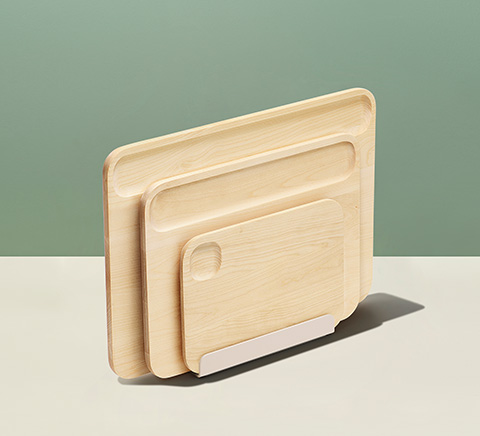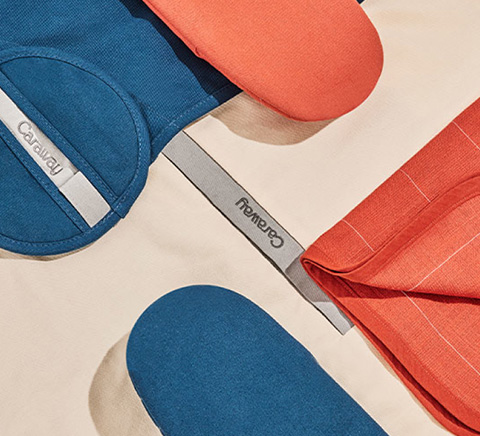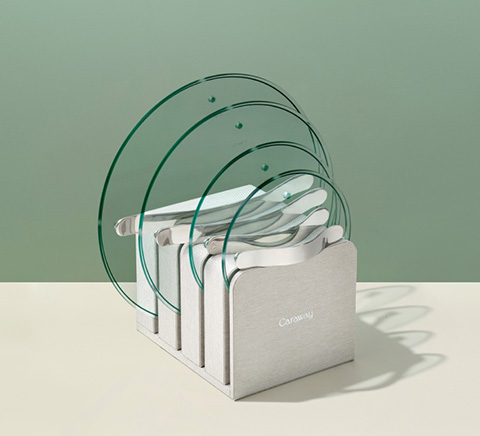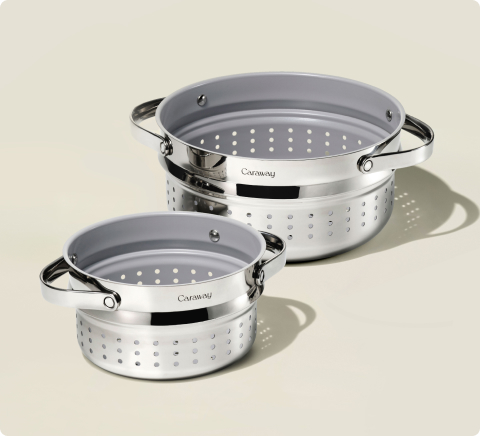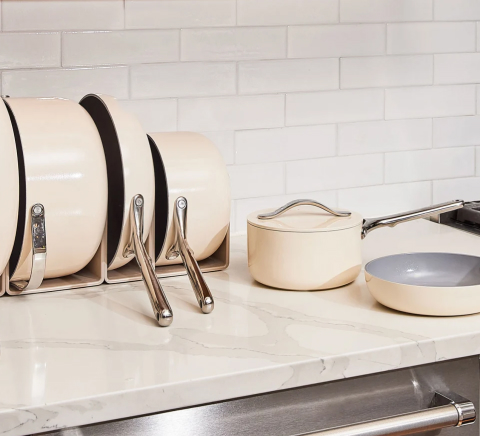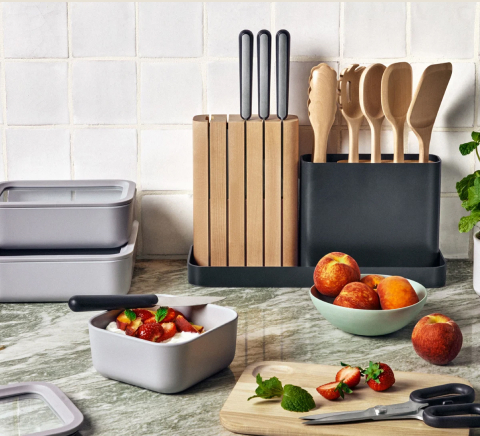Ever wonder why some wooden cutting boards last a lifetime while others seem to spoil as quickly as yesterday’s guacamole? It’s all in the care they receive. A wooden cutting board isn’t just a tool for slicing and dicing—it's an investment in your kitchen’s future.
In this article, we'll walk you through the practical steps to keep your board in top shape, making every chop and slice as satisfying as the first.
Why Is It Important To Maintain a Wooden Cutting Board?
Proper maintenance of a wooden cutting board is essential for several key reasons. Not only does it impact the board's functionality and longevity, but it also affects your food safety and the overall aesthetic of your kitchen.
Let's break down the benefits of keeping your wooden cutting board well-maintained.
Hygiene
A clean cutting board is a safe cutting board. Wood is naturally porous, which can allow it to absorb liquids and retain food particles.
If not properly cleaned, these residues can become breeding grounds for bacteria, potentially leading to foodborne illnesses. Regular, thorough cleaning followed by adequate drying prevents bacteria and mold growth, keeping your food preparations safe and hygienic.
Additionally, maintaining your board helps avoid cross-contamination between different types of foods, which is particularly important when handling raw meats and vegetables on the same board.
Durability
Investing time in maintaining your wooden cutting board can significantly extend its service life. Regular oiling conditions the wood, preventing it from becoming dry and brittle, which can lead to cracks and warps.
This type of damage shortens the board's lifespan, makes it more difficult to clean, and increases its likelihood of harboring bacteria. By keeping your board well-oiled and ensuring it dries completely upright after each wash, you protect your investment and avoid the need for frequent replacements.
Performance
A well-maintained wooden cutting board will enhance your cooking experience. A smooth and conditioned surface ensures stability during use, which helps in achieving precise cuts and consistent results.
This can make a noticeable difference when preparing delicate items or executing precise cuts. Moreover, a smooth surface is less likely to cause undue wear on your knives, keeping them sharper for longer.
Aesthetic Appeal
A wooden cutting board can be a part of your kitchen decor. A well-cared-for board maintains its rich color and smooth texture, adding a touch of warmth and elegance to your kitchen.
Regular maintenance preserves these qualities, ensuring your board looks inviting and presentable, whether you're slicing fruit for a snack or preparing a gourmet meal for guests. It reflects your commitment to your kitchen's appearance and functionality, showcasing your pride in your home and your tools.

How Do I Clean a Wooden Cutting Board?
Keeping your wooden cutting board clean is about maintaining its functionality and extending its life. Here are the steps to effectively clean your wooden cutting board after each use, ensuring it remains hygienic, beautiful, and ready for whatever recipe comes next.
Step 1: Scrape Off Food Residue
Immediately after use, use a bench scraper or a damp cloth to remove any food particles from the board. This prevents the residue from hardening and becoming more difficult to clean later.
Step 2: Wash with Warm, Soapy Water
Using a soft sponge or brush, gently clean the board with warm soapy water. Avoid using harsh detergents, which can strip the wood of its natural oils.
Scrub the surface, sides, and any crevices where food particles can accumulate. It's important not to soak your wooden board in water, as prolonged exposure to moisture can cause the wood to swell and split.
Step 3: Rinse and Sanitize
After washing, rinse the board thoroughly with warm water to remove any soap residue. To sanitize, you can wipe down the surface with a solution of one part vinegar to four parts water. Vinegar is effective against bacteria and can help neutralize odors without damaging the wood.
Step 4: Dry Properly
After cleaning and sanitizing, dry the board thoroughly with a clean towel. Then, stand it upright to air dry completely before storing. This prevents moisture from being trapped on the surface or between the board and the countertop, which could lead to mold and mildew.
Step 5: Regular Oiling
Once the board is dry, it's essential to maintain its condition by regularly applying food-safe mineral oil or a beeswax-based board cream. As mentioned earlier, this helps replenish the natural oils in the wood, keeping it hydrated and preventing cracks and splits.
Apply the oil or cream with a clean cloth, working in the direction of the grain, and let it soak in overnight. Wipe off any excess in the morning before using the board again.

Maintenance Tips for Wooden Cutting Boards
To ensure your wooden cutting board remains in pristine condition, regular maintenance is key. Here are some essential tips to keep your cutting board looking and functioning at its best:
1. Avoid Extreme Temperatures
Extreme heat or cold can cause wood to warp or crack. Avoid placing your wooden cutting boards near ovens, stovetops, or in the refrigerator. If you're using our FSC-Certified 4-Piece Board Set, remember that while it's designed to handle all your slicing and dicing needs, it still benefits from being treated with care away from extreme environments.
2. Use the Right Cutting Tools
Use the proper cutting tools to prevent unnecessary scratches and preserve the surface. Knives from our Prep and Boards Set, which features premium German steel blades, are perfect as they're designed to cut efficiently without damaging the delicate surface of your wooden boards.
3. Monthly Oiling
Regular oiling is crucial to prevent the wood from drying out and cracking. Use food-safe mineral oil or beeswax to condition the wood. For our Cutting Board Set, a light and even application of mineral oil once a month will keep the boards looking new and prevent moisture from seeping into the wood.
4. Deep Cleaning
It's wise to give your wooden cutting boards a deep clean every few months. This involves a more thorough scrubbing and possibly sanding down any rough spots if needed. After deep cleaning, applying a generous coating of mineral oil and letting it soak in overnight will restore the finish and ensure the boards remain water-resistant and durable.
5. Proper Storage
Store your wooden cutting boards in a dry area and ensure they are completely dry before putting them away. The complimentary storage organizer included with our Cutting Board Set is designed to keep your boards neatly organized and adequately ventilated, which helps prevent mold and warping.

When Is It Time To Replace Your Wooden Cutting Board?
Even with meticulous care, there comes a time when your wooden cutting board might need to be replaced. Knowing the signs to look for can help you decide when to retire your old board and introduce a new one.
Here's what to watch for:
Deep Grooves and Cuts
Over time, knife marks can accumulate, creating deep grooves in the wood. These cuts not only make it difficult to clean the board thoroughly but also provide hiding spots for bacteria and food residues. If your board shows significant scarring that cleaning and sanding can't fix, it's time to consider a replacement.
Cracks and Splits
Wooden boards can develop cracks and splits, especially if they've been exposed to moisture or heat inconsistently. These cracks are not just unsightly but can also harbor bacteria and compromise the structural integrity of the board, making it unsafe for food preparation.
Warping
A warped board is more than just an inconvenience---it's a safety hazard. A board that doesn't lay flat on the counter can lead to unstable cutting conditions, increasing the risk of knife slips and injuries. If your board refuses to lie flat despite your best efforts at maintenance, replacing it is a wise choice.
Persistent Odors
While some odors can be neutralized with deep cleaning, a board that continually smells musty or like spoiled food indicates deep-set bacterial growth and could pose a health risk. Persistent odors are a clear sign that your board has reached the end of its useful life.
Aesthetic Deterioration
Sometimes, the appearance of the board can dictate its replacement. If your board has become an eyesore in your kitchen despite all efforts to revive it, consider upgrading to a new one that you'll be proud to display and use.
Conclusion
We hope this guide empowers you to maintain and cherish your wooden cutting boards with the same care you put into your meals. Remember, a well-kept board is more than just a kitchen tool---it's a partner in your culinary adventures, ensuring every meal is prepared on a safe, durable, and beautiful surface.
Whether you're seasoning today's veggies or carving tomorrow's roast, your cutting board should be up to the task. Ready to elevate your kitchen essentials? Explore our Cutting Board Set and Prep and Boards Set --- crafted to enhance your kitchen and simplify your prep work.
Embrace the blend of sustainability, quality, and style that Caraway offers. Visit our website to find the perfect kitchen companions that suit your cooking style and aesthetic.
Let's make every slice count!
Sources:
Wood - Strength, Structure, Uses | Britannica
Food Safety Education Month: Preventing Cross-Contamination | USDA









